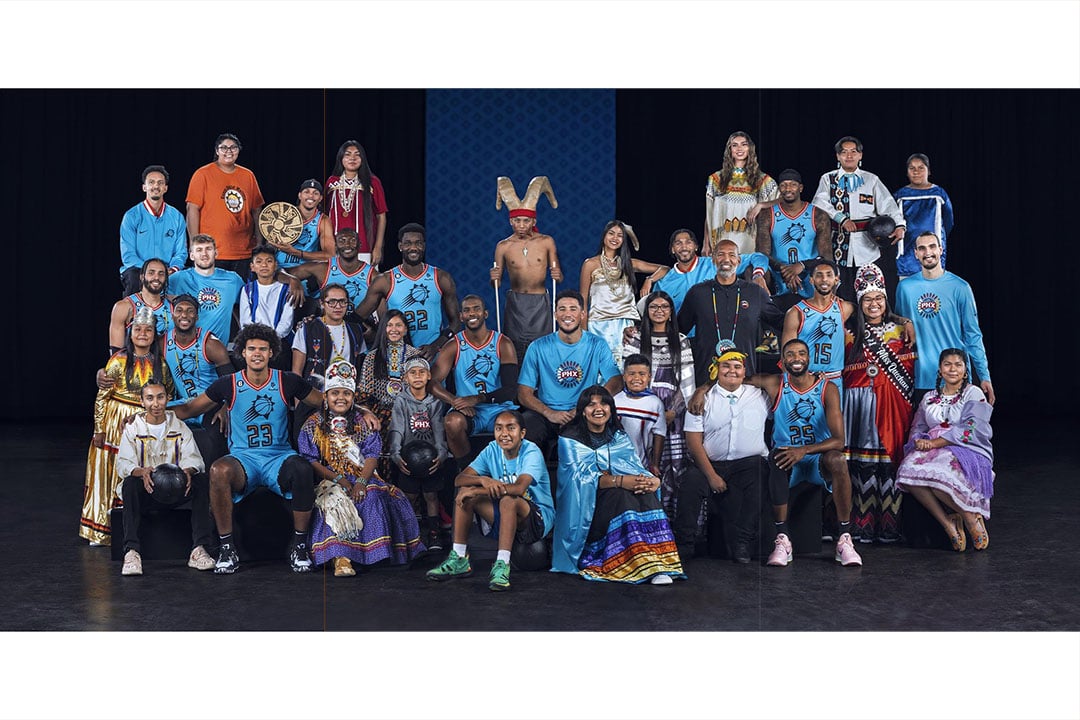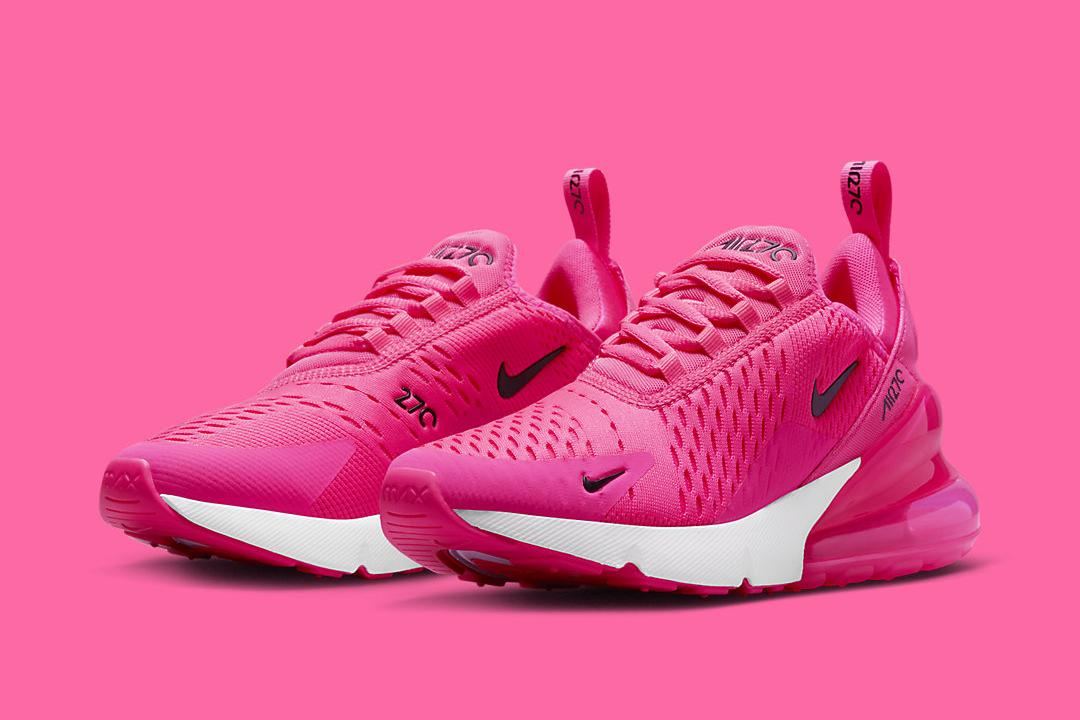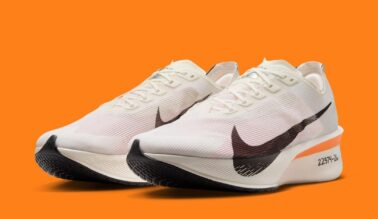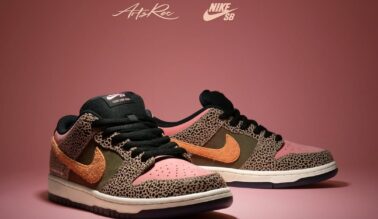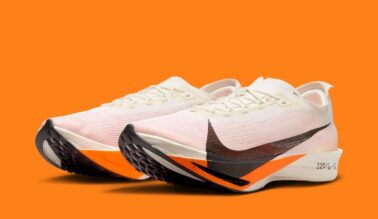This post may contain affiliate links. Please read our disclosure policy.
Nike became the official jersey sponsor of the NBA during the 2017-2018 season. The deal would usher a new wave of storytelling for each team as all 30 teams throughout the league would have four uniforms in rotation — Association, Icon, Classic, and City.
Each jersey holds a diffrent component for the team with City Edition being the premier vehicle for the team to connect back to the community in a way it normally couldn’t with a regular uniform.
Through the years, the City Edition jerseys have been some of the most anticipated unveilings for the league.
As the program enters its fifth year, the Phoenix Suns and Nike are using their partnership to bring awareness, visibility, and honor to Arizona’s 22 Native American tribes:
Ak-Chin Indian Community; Cocopah Indian Tribe; Colorado River Indian Tribes; Fort McDowell Yavapai Nation; Fort Mojave Indian Tribe; Gila River Indian Community; Havasupai Tribe; Hopi Tribe; Hualapai Tribe; Kaibab Band of Paiute Indians; Navajo Nation; Pascua Yaqui Tribe; Pueblo of Zuni; Quechan Indian Tribe; Salt River Pima-Maricopa Indian Community; San Carlos Apache Tribe; San Juan Southern Paiute; Tohono O’odham Nation; Tonto Apache Tribe; White Mountain Apache Tribe; Yavapai-Apache Nation; Yavapai-Prescott Indian Tribe.
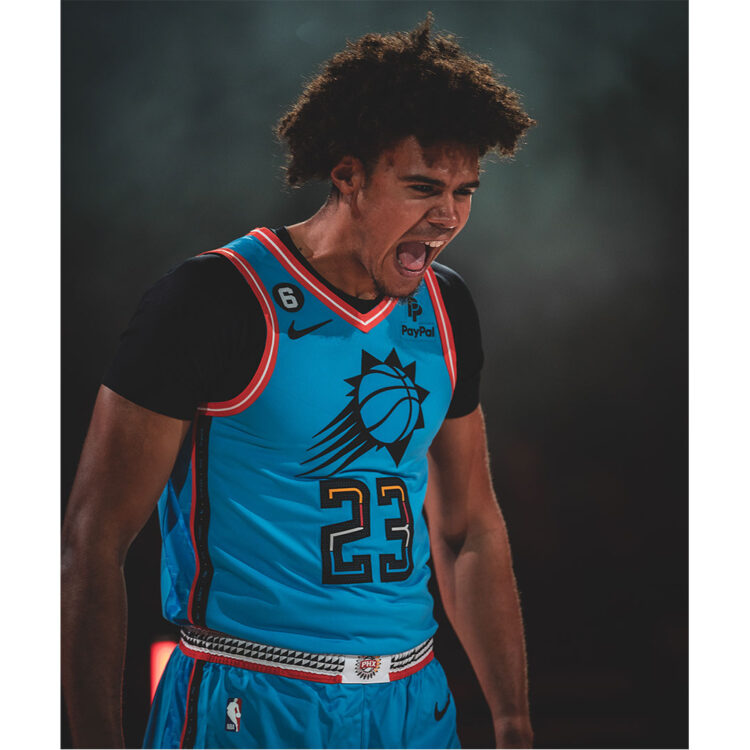
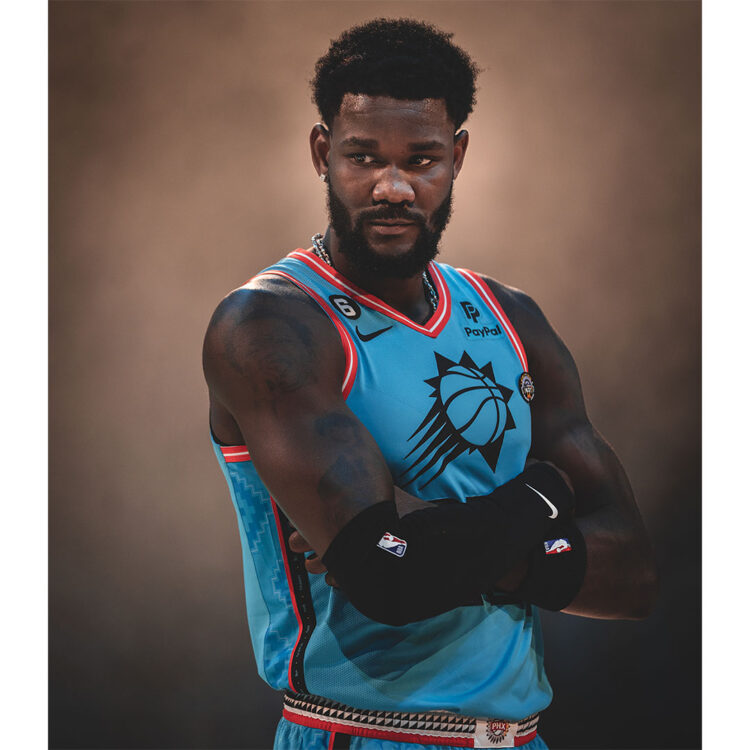
“The story is bigger than the uniform,” said Graham Wincott, Senior Director of Marketing for the phoenix suns. “The City Edition program is supposed to be the nexus of court, community, and culture. We were trying to find things in Phoenix, things in Arizona, that brought together basketball culture, community impact, and have a strong cultural story,” he added.
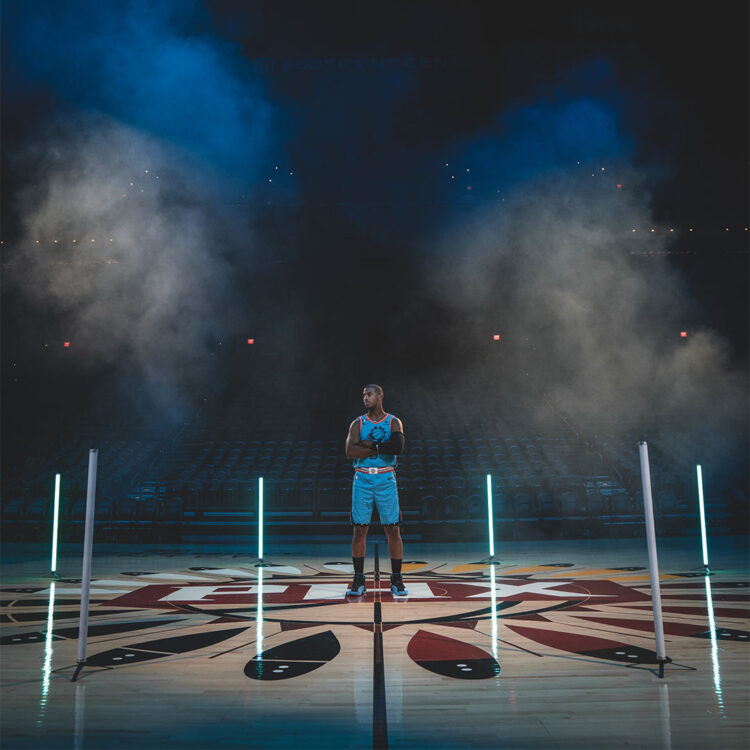
At the beginning of the pandemic, the Suns looked into a long-standing, 20-year-old basketball tradition in The Valley for inspiration — the Native American Basketball Invitational (NABI).
“We’ve hosted this tournament at our arena. It’s the premier indigenous basketball tournament in the united states, Wincott said. “We haven’t done a lot of storytelling around it.”
Until now.
After the birth of the idea, Wincott & co. began researching Rezball, Native American basketball culture in the Grand Canyon state, and connecting with each tribal leader & community for an authentic & equal celebration of Arizona’s indigeneity.
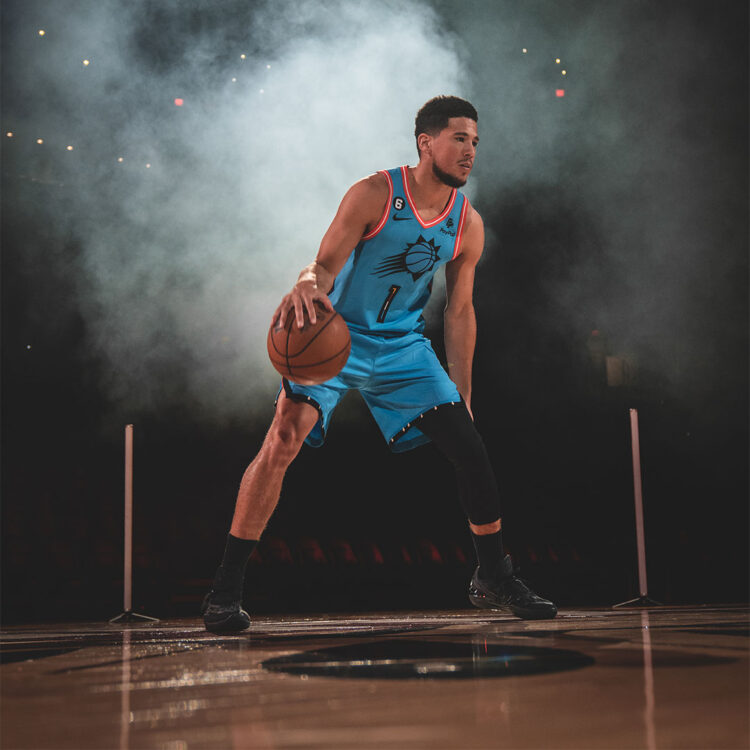
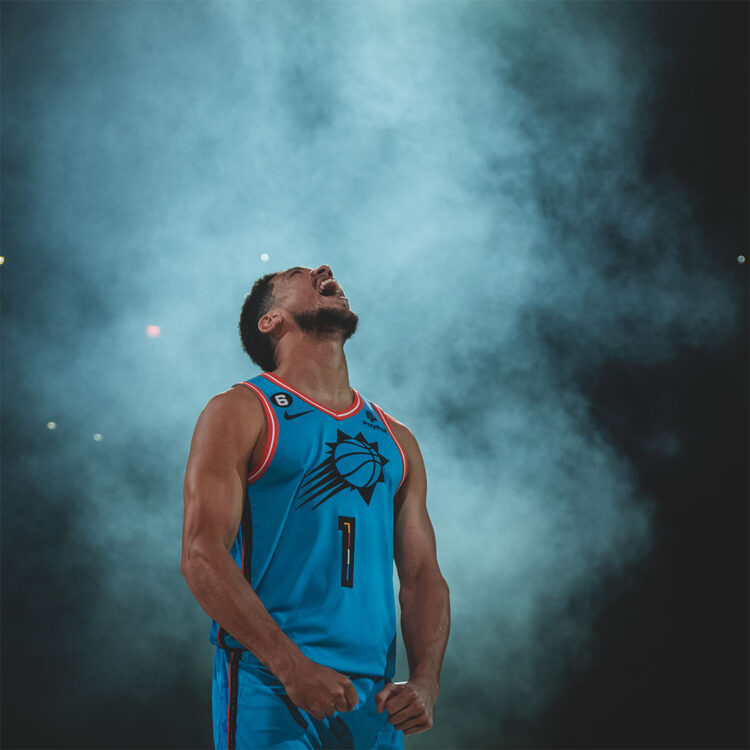
“People don’t understand how much diversity there is in the tribal communities of Arizona,” Wincott said. “For us, it was a constant learning process of trying to find shared characteristics and things to celebrate the cultures in a broad way without skewing too heavily toward one or the other was the biggest challenge.”
The unifying thread for all 22 tribes became the foundation of the uniform and, above all, the story.
Turquoise.
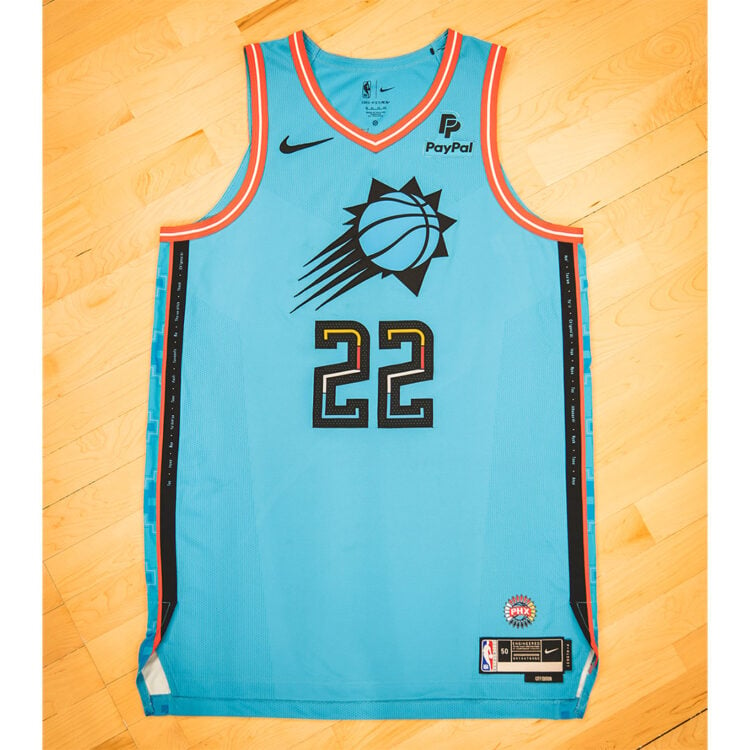

“It was one of the few things that was a thread that ran through all of the southwestern tribes,” Wincott said.
Turquoise symbolizes life, courage, truth, and protection within Native American culture.
“In one statement, it’s proving life in the form of water. On the protection side, it’s armor for our guys. It provides strength in the uniforms. It helps bring that story together,” he added.
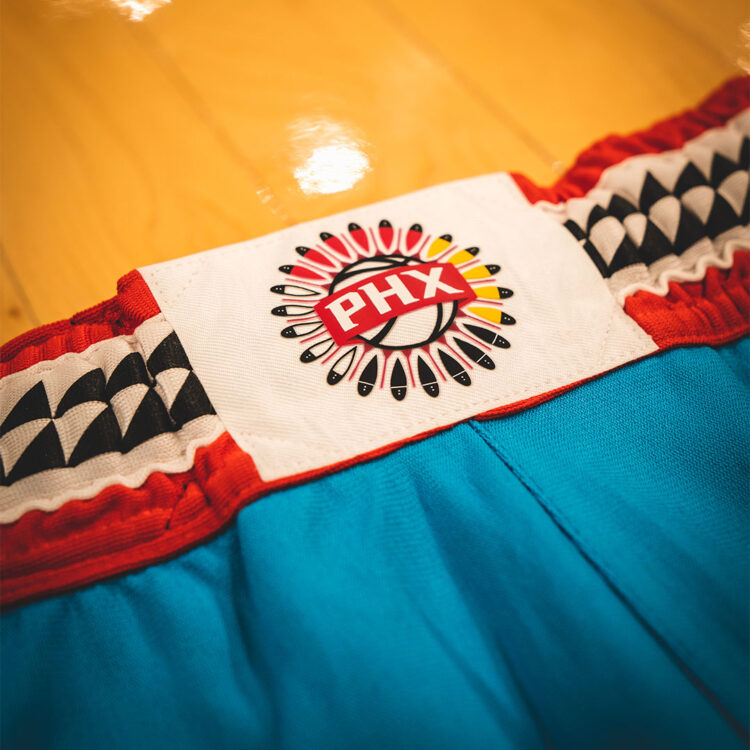
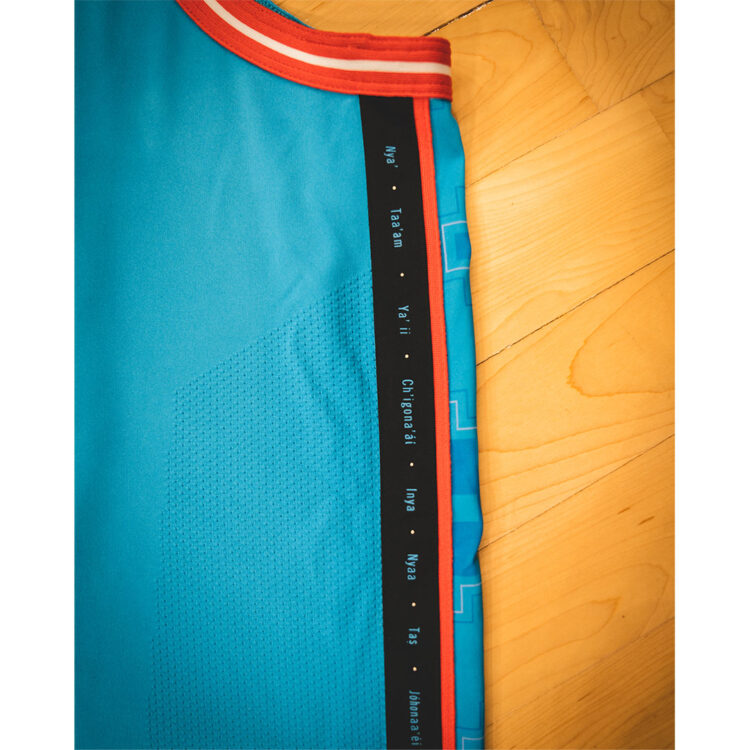
On the uniform’s original design turquoise was meant to be an accent color. But the team knew it being an accent wouldn’t have the uniform and its story impact the way it could.
“If the uniform is only mildly giving a nod to the tribal nations, would that story be as effective? I don’t think so,” Wincott added. “Us having it out there and it being bold — these cultures tend to have bold representation in what they wear — we wanted to be authentic and reflect the culture where we’re representing and making sure that it resonates.”
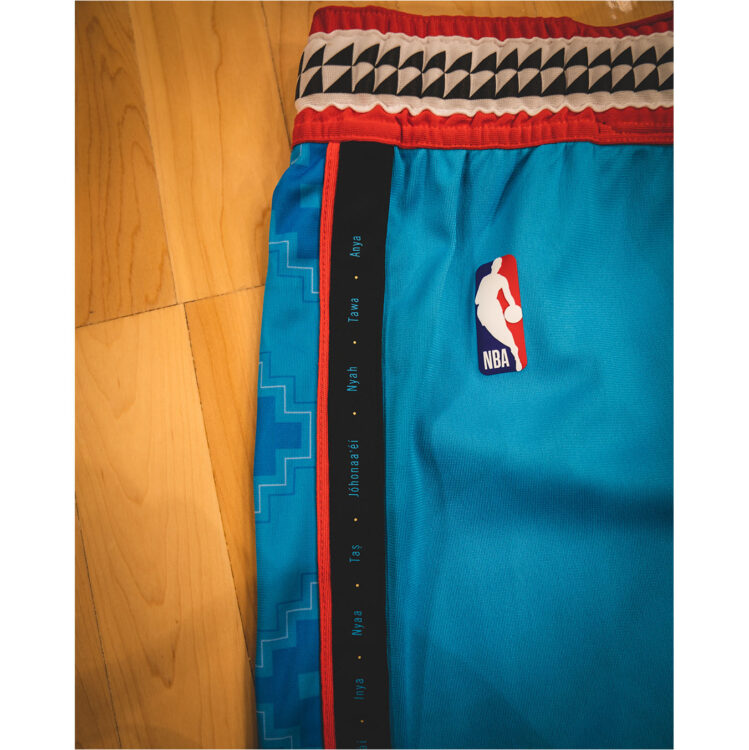
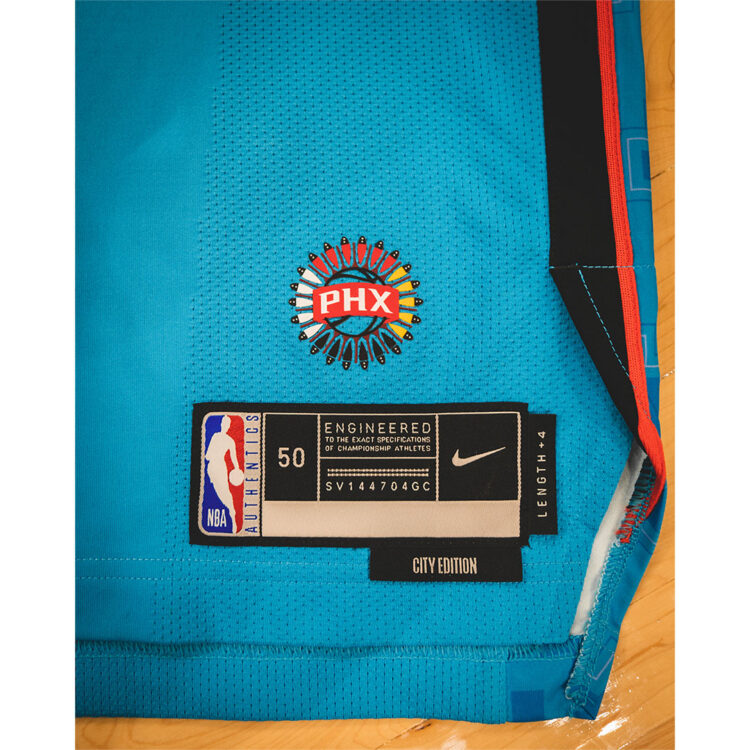
Another main component of the uniform is implementing the word “sun” in every tribe’s native tongue written on the trim of the jerseys and shorts, furthering the celebration of the tribes, their culture, and their significance in The Valley.
The story is bigger than the uniform
Graham Wincott, Phoenix Suns’ Senior Marketing Director
“The most important element on there is the words. It’s subtle but it is the most direct representation of the resiliency of these nations,” Wincott points out. “Predominantly, none of these languages were written languages. Even getting permission to have them featured in a written form is an accomplishment in itself.”
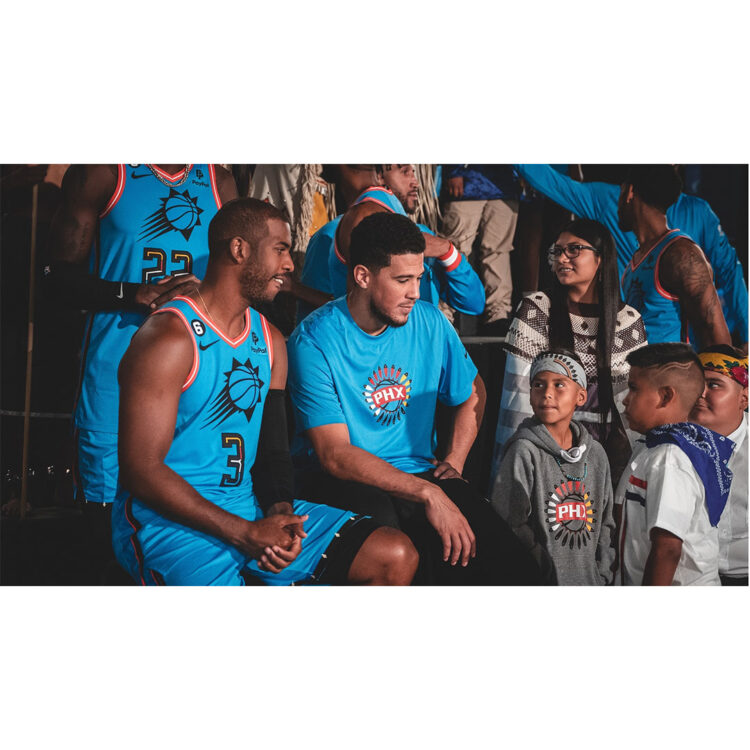
“In some of the smaller tribes, there might be a small handful of people who speak the language. A thread that connects them to the past that carries them on to generations and the fact that it’s still here and still is a living language and is on this jersey as a platform to tell people what it is,” he adds.
For Shawn Martinez, Senior Director of Live Presentation for the Phoenix Suns and a member of the Navajo tribe, the uniform means so much more.
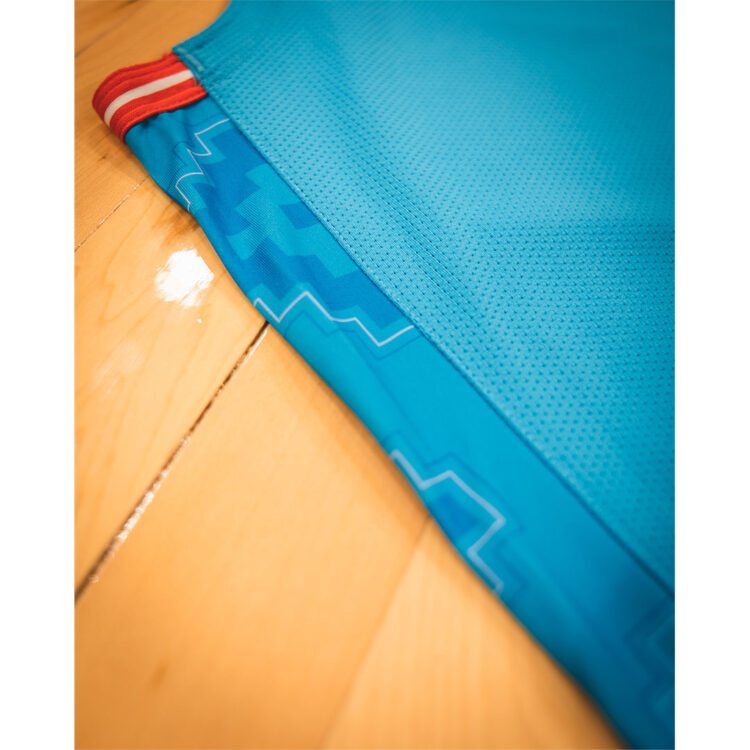
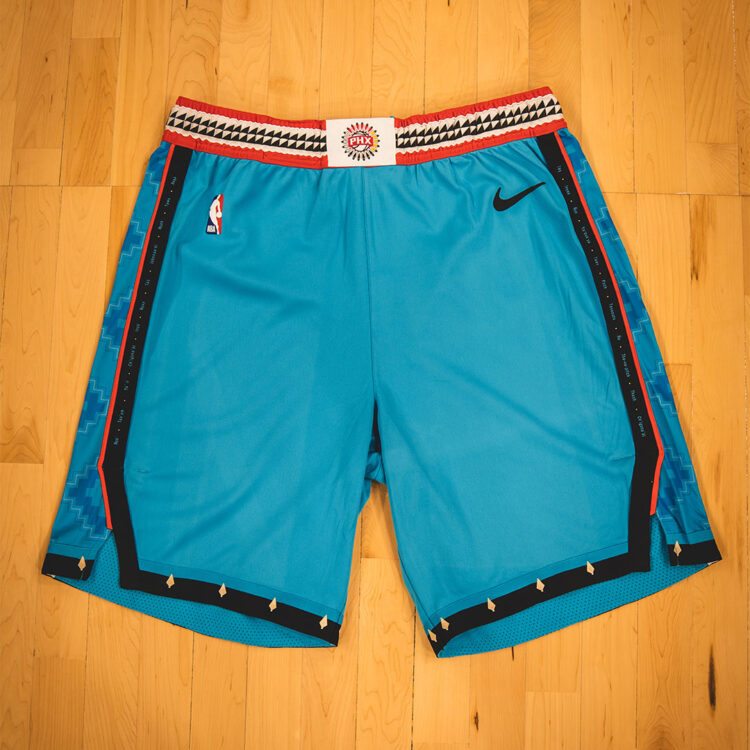
Martinez, who grew up playing Rezball with aspirations of making it to the league, recalled Suns’ greats. And while he never played for the Suns, he — and others — played a fundamental role in honoring Arizona’s Native American community through basketball.
We’re trying to educate people, we’re trying to amplify the voice of every tribe
Shawn Martinez, Phoenix Suns’ Senior Director of Live Presentation
From taping a box to the wall and shooting bundled-up socks to watching Alvin Adams, Paul Westphal, and other greats, Martinez fulfilled his dream of making it to the NBA through a new avenue.
“I had dreams of making it in the NBA. I just made it in a different way,” Martinez said.
In addition to the 22 translations of the word “sun” on the uniforms, the words would appear on the City Edition-dedicated court, which includes the reimagined Suns logo, emulating the medicine wheel amongst other details.
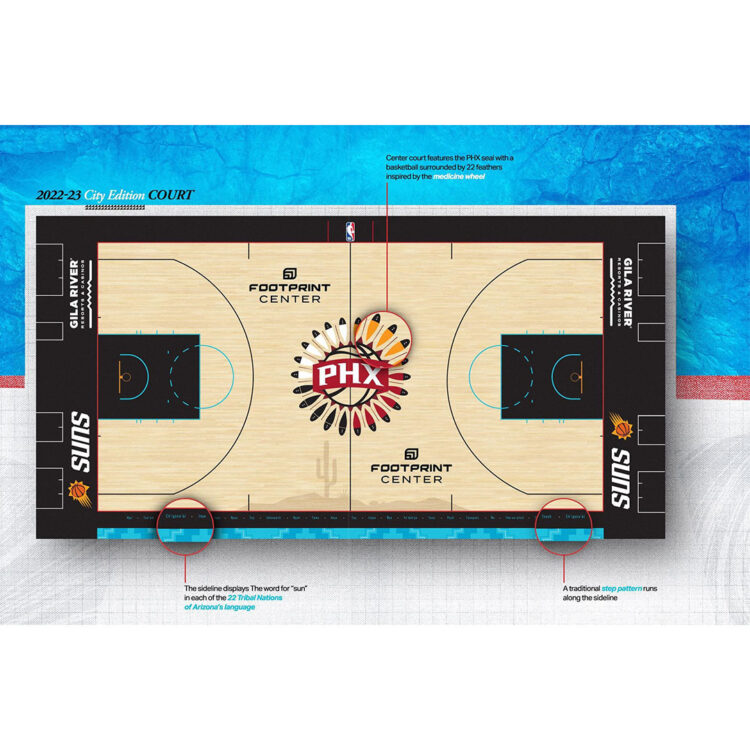
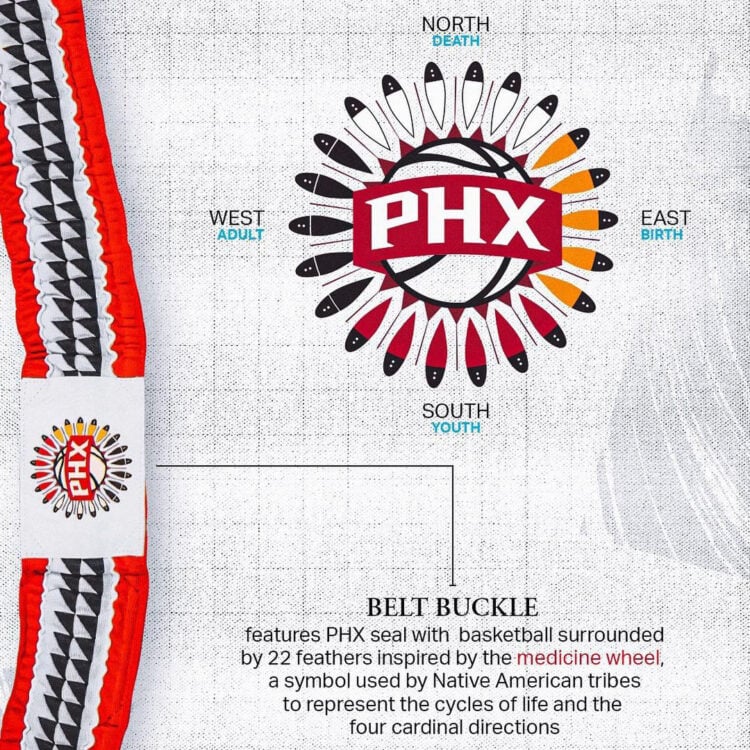
“We did a lot of hard work to get those words and have it represented,” Martinez recalls. “When they see [the uniform], they see the court, they see their word; it hits the heart; it hits home. No one’s ever done it like we’ve rolled it out.”
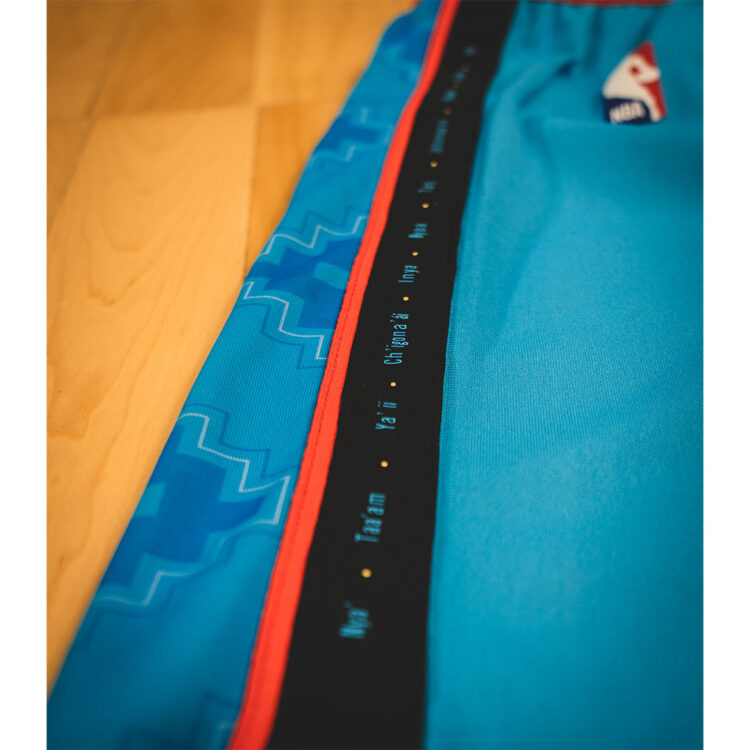
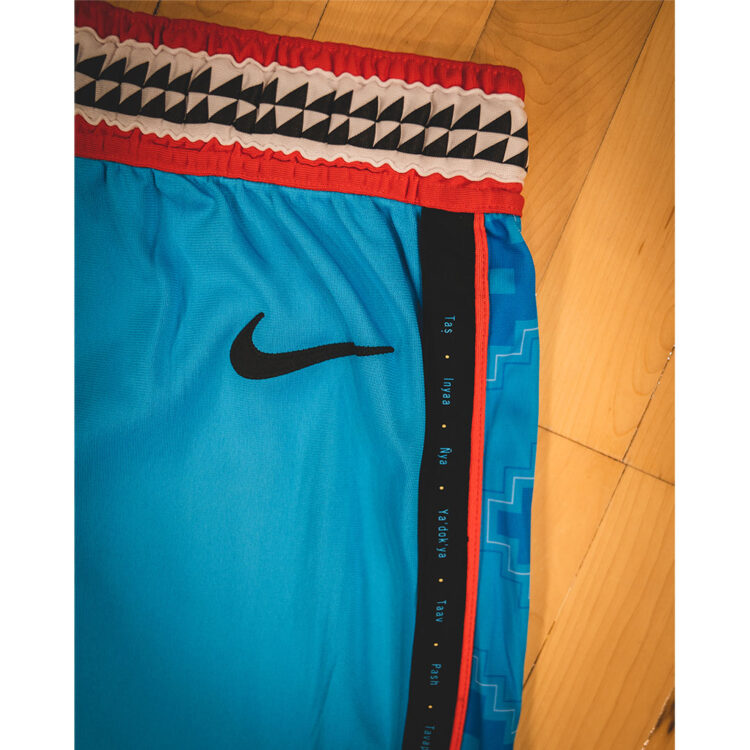
The excitement isn’t just within the storytellers, designers, and marketing directors of the team. The anticipation even stretches to the Phoenix Suns players.
“This started off as a presentation to the Suns team in the locker room where they got a custom box with their uniform in it,” Wincott said. “It had a card explaining all of the uniform elements — why we’re doing it and what everything stands for.”
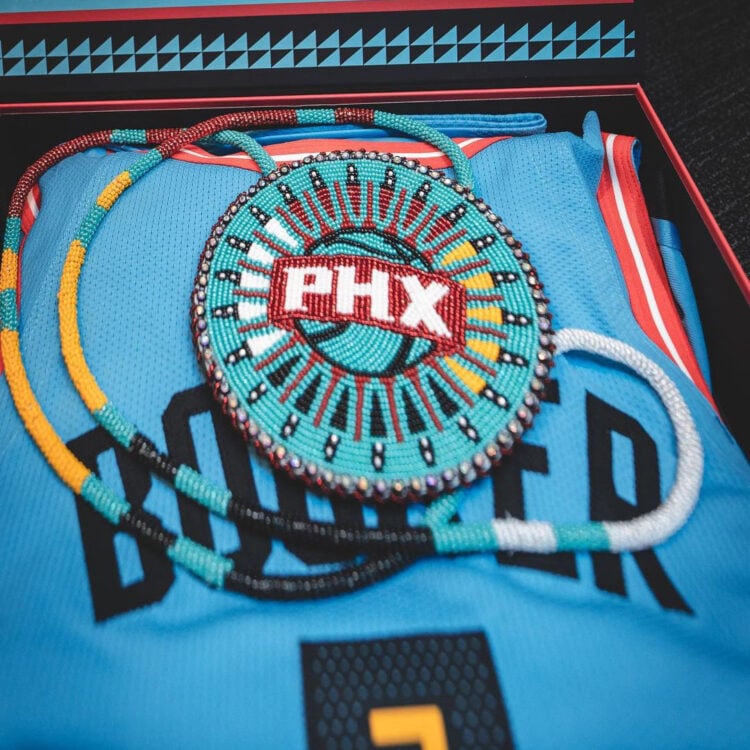
In addition to the box and card, the players were also gifted a custom medallion, by Bethany Smith, a renowned Navajo beader. The importance of the City Edition uniform isn’t just about educating the masses but the organization as well from employees to the players.
“The players were fully educated on what the uniform means, why it’s bigger than basketball, why it’s going to have such an impact. They reacted positively, they had questions and thoughtful things to be said. It was an amazing moment for the team and the franchise,” Wincott added.
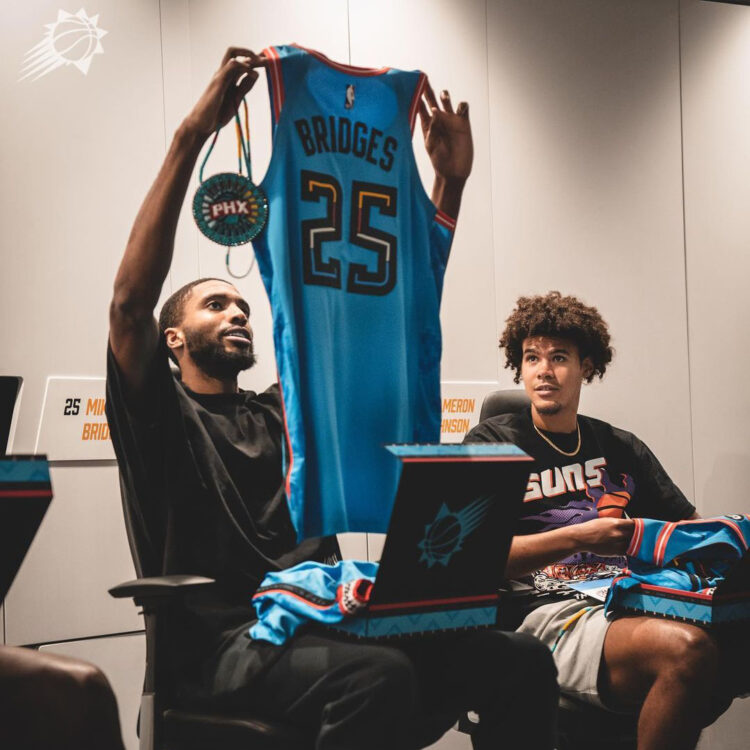
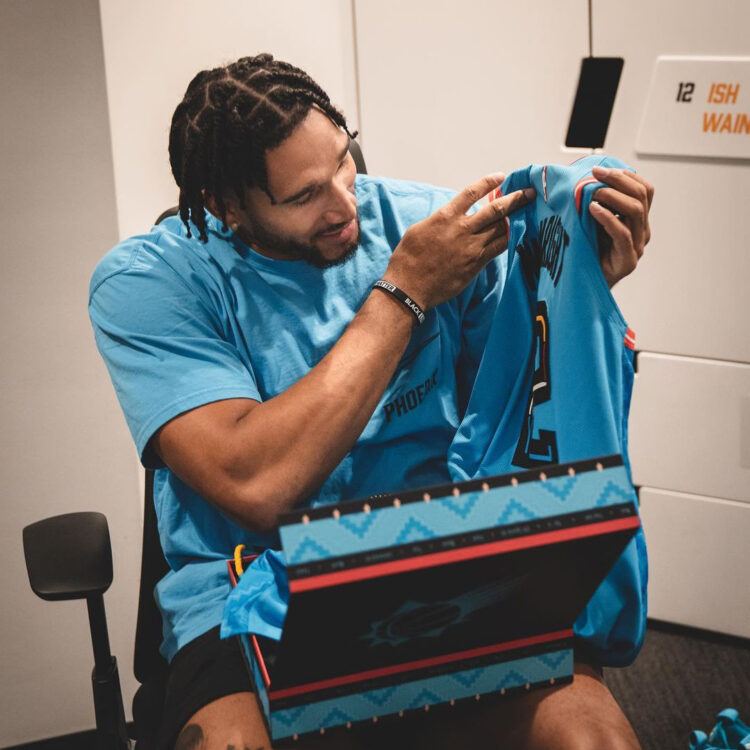
“Hearing Chris Paul say, ‘no one’s ever explained this to us like this,’ — it means so much more. We know what this jersey is about and what it means to the tribal communities across Arizona,” Martinez said.
“It’s unbelievable.”
The Phoenix Suns will wear the City Edition jersey on 10 separate occasions, the first of which against the Golden State Warriors on November 16 during a nationally televised game with all 22 tribes leaders in attendance with a special halftime ceremony.
“We’re going to feed [the national broadcasters] talking points like we will for the other games — why are the Suns wearing turquoise? What does it mean? What’s the purpose? Whether it’s Mike Breen or Jeff van Gundy or whoever it might be, they’re going to talk about it in what will be one of the highest-rated NBA games of the year,” Wincott stated.
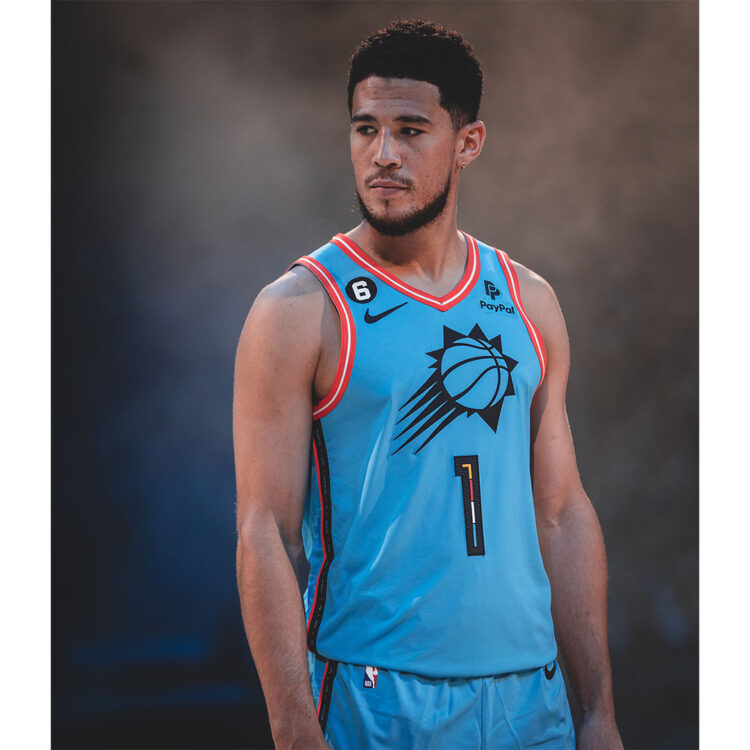
With National Native American Heritage Month taking place in November, the Suns will wear the uniforms in back-to-back-to-back games going from the defending NBA champions, the Golden State Warriors, to the New York Knicks and the Los Angeles Lakers – ensuring that the story isn’t lost after its first wear.
“We’re trying to educate people, we’re trying to amplify the voice of every tribe,” Martinez adds.
In addition to the uniform and the court, the Phoenix Suns will add a new element to its pre-game routine, tying back to the uniform and its vital story.
“For us, it’s about bringing in new traditions and things we can incorporate into the brand as a whole that will carry this on,” Wincott states.
“We’re going to implement a pow wow drum and [explain] why we play this drum, why it’s the heartbeat of mother earth calling her children in to sing, to dance; we’re going to use that in the right way before the team comes out,” Martinez adds. “We’re trying to educate people, we’re trying to amplify the voice of every tribe.”
“Once they hear the drum, they’ll know it’s Suns basketball time.”
Stay tuned to Nice Kicks for more industry news, sneaker release dates, and exclsuive interviews.
